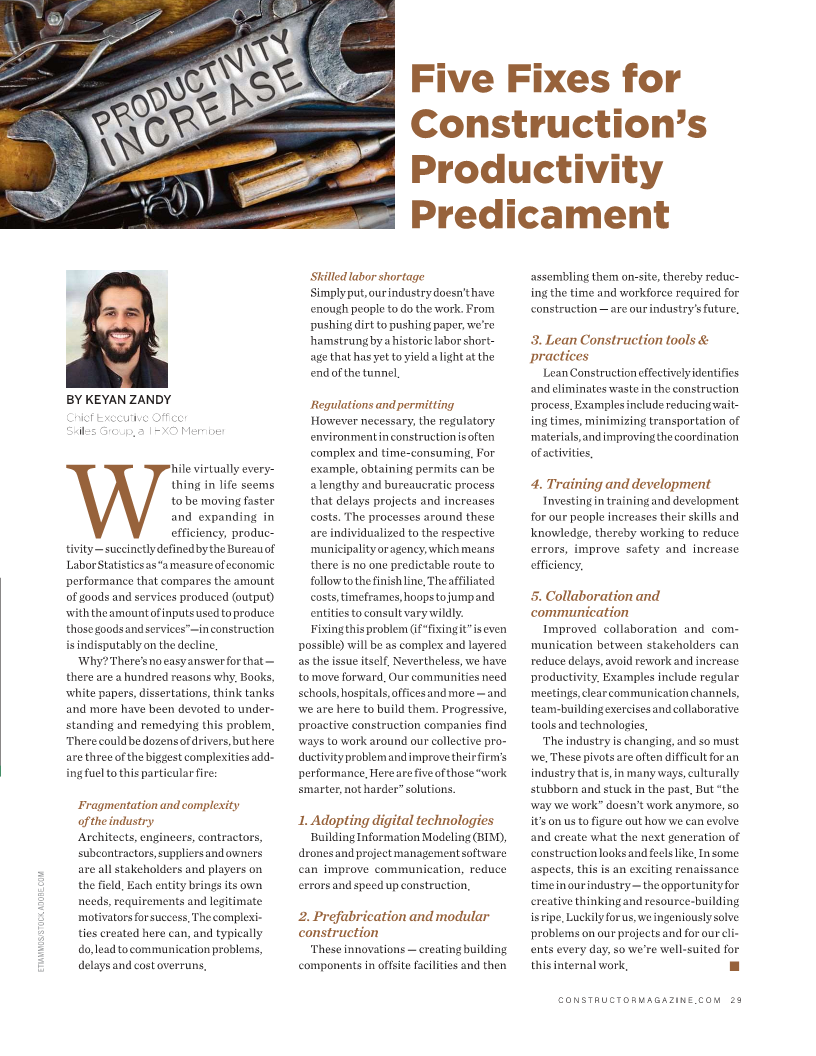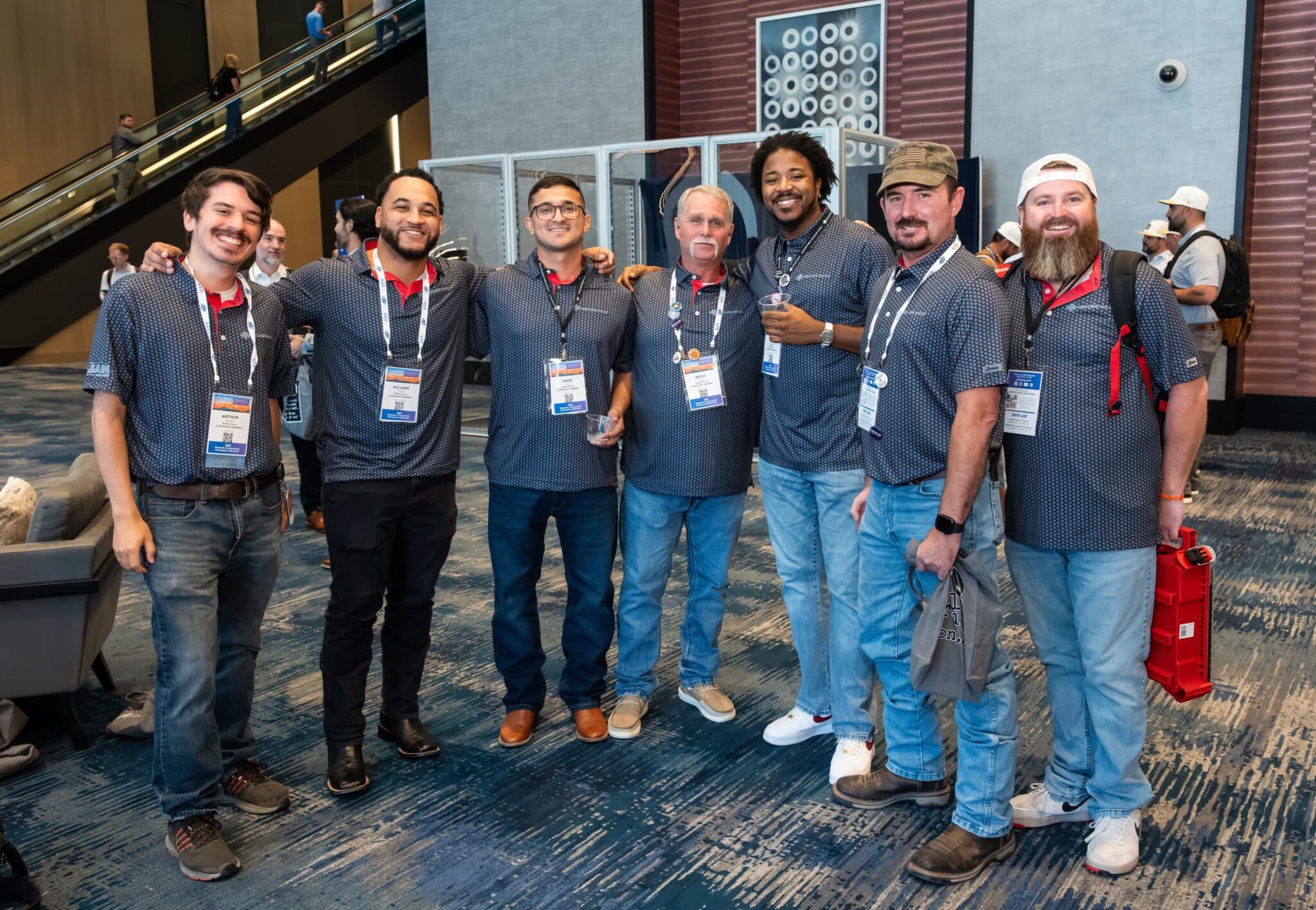While virtually everything in life seems to be moving faster and expanding in efficiency, productivity—succinctly defined by the Bureau of Labor Statistics as “a measure of economic performance that compares the amount of goods and services produced (output) with the amount of inputs used to produce those goods and services”—in construction is indisputably on the decline.
Why? There’s no easy answer for that—there are a hundred reasons why. Books, white papers, dissertations, think tanks, and more have been devoted to understanding and remedying this problem. I could list dozens of drivers, but here are three of the biggest complexities adding fuel to this particular fire:
- Fragmentation and complexity of the industry
Architects, engineers, contractors, subcontractors, suppliers, and owners are all stakeholders and players on the field. Each entity brings its own needs, requirements, and legitimate motivators for success. The complexities created here can, and typically do, lead to communication problems, delays, and cost overruns.
- Skilled labor shortage
Simply put, our industry doesn’t have enough people to do the work. From pushing dirt to pushing paper, we’re hamstrung by a historic labor shortage that has yet to yield a light at the end of the tunnel. - Regulations and permitting
However necessary, the regulatory environment in construction is often complex and time-consuming. For example, obtaining permits can be a lengthy and bureaucratic process that delays projects and increases costs. The processes around these are individualized to the respective municipality or agency, which means there is no one predictable route to follow to the finish line. The affiliated costs, timeframes, hoops to jump, and entities to consult vary wildly.
Fixing this problem (if “fixing it” is even possible) will be as complex and layered as the issue itself. Nevertheless, we have to move forward. Our communities need schools, hospitals, offices, and more—and we are here to build them. Progressive, proactive construction companies find ways to work around our collective productivity problem and improve their firm’s performance. Here are five of those “work smarter, not harder” solutions.
- Adopting digital technologies
Building Information Modeling (BIM), drones, and project management software can improve communication, reduce errors, and speed up construction. - Prefabrication and modular construction
These innovations—creating building components in offsite facilities and then assembling them on-site, thereby reducing the time and workforce required for construction—are our industry’s future. - Lean Construction tools & practices
Lean Construction effectively identifies and eliminates waste in the construction process. Examples include reducing waiting times, minimizing transportation of materials, and improving the coordination of activities. - Training and development
Investing in training and development for our people increases their skills and knowledge, thereby working to reduce errors, improve safety, and increase efficiency. - Collaboration and communication
Improved collaboration and communication between stakeholders can reduce delays, avoid rework, and increase productivity. Examples include regular meetings, clear communication channels, team-building exercises, and collaborative tools and technologies.
The industry is changing, and so must we. These pivots are often difficult for an industry that is, in many ways, culturally stubborn and stuck in the past. But “the way we work” doesn’t work anymore, so it’s on us to figure out how we can evolve and create what the next generation of construction looks and feels like. In some aspects, this is an exciting renaissance time in our industry—the opportunity for creative thinking and resource-building is ripe. Luckily for us, we ingeniously solve problems on our projects and for our clients every day, so we’re well-suited for this internal work.

This article was written for Constructor Magazine’s May/June 2023 issue; you can read it here:
https://constructor-may-june.mydigitalpublication.com/publication/?m=69328&i=789865&p=28&ver=html5




